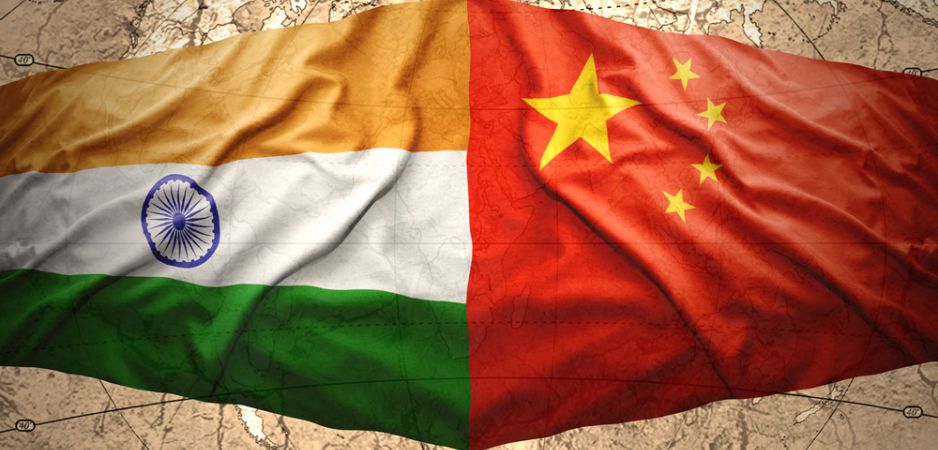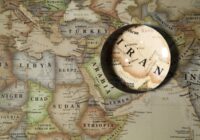Following his trip to China, Modi has talked about advancing India-China relations by “miles.”
Where do relations between New Delhi and Beijing stand following Indian Prime Minister Narendra Modi’s visit to China? Pretty much the same as before. The trip did little to alter the pattern of heightened strategic competition and modest economic engagement that began to congeal in late 2014.
Modi’s journey was preceded by undue optimism among some in the Indian commentariat that a transformation in bilateral affairs might be in the offing. In this telling, the tandem of Modi and Chinese President Xi Jinping — decisive and pragmatic leaders who are both undertaking ambitious economic reform programs at home — would be able to drive relations toward some sort of breakthrough. Indian Foreign Minister Sushma Swaraj contributed to this speculation a few months ago, when she ventured that the leadership in both countries had the “political will to think out of the box” to find a solution to the long-simmering Himalayan border dispute plaguing relations for decades.
Others, drawing on the so-called “Chindia” narrative of tighter economic collaboration between the countries, opined that a grand bargain might be forged in commerce and investment. Modi helped to give rise to such thoughts when he earlier coined a new terminology to describe the relationship as “Inch towards Miles” — “INCH that is ‘India-China’; towards MILES — ‘millennium of exceptional synergy.’” Some observers thus expected that a deal might be struck channeling China’s vast foreign currency reserves toward India’s vast infrastructure needs, or enlisting Chinese companies in Modi’s signature “Make in India” program that seeks to transform the country into a global manufacturing hub.
To be sure, Modi’s visit did generate plenty of bonhomie. Xi broke with diplomatic protocol and did Modi the honor of welcoming him in Xi’an, a city in central China that Xi considers his hometown. Indian officials reported that the personal interactions between the two leaders exhibited “unprecedented chemistry.” Modi even capped the trip off by taking a selfie photo with Li Keqiang, the Chinese premier for whom this must have been an unnatural act.
The Border Question
But it was inevitable that hopes for consequential results would be dashed. As the border question impinges directly on Beijing sensitivities regarding Tibet, the Chinese imperative is to issue dilatory pronouncements that have the effect of reinforcing the status quo rather than overcoming it. Indeed, for all of the trip’s cordiality, Modi reportedly delivered a blunt message to his hosts, telling them that the status quo along the undefined border was unacceptable, and it was their responsibility to address Indian grievances quickly lest they “lead to hesitation and doubts, even distrust, in our relationship.”
The words fell on deaf ears since the visit’s joint statement contained nothing that was new on the issue. Indeed, Beijing telegraphed such an outcome several months ago in its strenuous opposition to Modi’s visit to Arunachal Pradesh, a state in India’s northeastern region that China has taken to calling “southern Tibet.” Significantly, several days after Modi’s trip to China, his national security advisor stated that the long-running bilateral negotiations on the border “haven’t reached anywhere.”
Modi’s sojourn to China did yield a slew of commercial agreements, including on the infrastructure front, though it is unclear what their impact will. One Chinese official estimated their value at $10 billion, while an Indian official put it at $22 billion. Whatever the true figure, it falls far short of the $46 billion in infrastructure funding Chinese President Xi Jinping offered to Pakistan in April and the $50 billion that Li dispensed during his recent trip to Brazil.
The juxtaposition is all the more glaring given that a few days prior to Modi’s trip, New Delhi tapped a veteran Indian banker to serve as the first head of the New Development Bank, a Chinese-inspired initiative by the so-called BRICS grouping that is designed to finance infrastructure projects in emerging markets. New Delhi’s participation in the institution (and in the Asian Infrastructure Investment Bank, another Chinese creation) is based on the expectation that some of this funding will be headed India’s way. The “One Belt, One Road” project — Xi’s audacious initiative to build massive infrastructure networks connecting Asia, Eurasia, Europe and East Africa to China — is much ballyhooed these days. But a senior Indian official confirmed during the Modi trip that Beijing has not gotten around to inviting India to participate.
(As a side note, one wonders what New Delhi’s reaction will be when Beijing uses its massive leverage in the BRICS bank or the AIIB to torpedo infrastructure loans destined for Arunachal Pradesh. In 2009, China blocked funding from the Asian Development Bank that had been earmarked for flood-control projects in the Indian state. A related question concerns India’s response if either institution directs funding for the China-Pakistan Economic Corridor, part of which will run through the disputed Kashmir region.)
As Xi’s visit to India in September 2014 exemplified, India-China leadership summits rarely live up to their hype. Back then the Indian prime minister made a special effort to woo Xi by hosting him in Modi’s home state of Gujarat. The outing featured the two leaders seated together on a swing in a riverfront park, an image evoking the long past days of Hindi Chini Bhai Bhai (“India-China brotherhood”). But the courtship was upended by a major border standoff between Indian and Chinese military forces that began just prior to Xi’s arrival. The episode was much more serious than it appeared initially, and it continues to cast a shadow over bilateral relations.
Many in the Indian security establishment interpret the incident as a deliberate provocation by Xi, intended to test the mettle of Modi, who at the time had been in office for less than three months. Reinforcing this view was the berthing of a Chinese attack submarine in Sri Lanka just days before Xi showed up in India, the first time the burgeoning Chinese navy had done this. The development was so disquieting from New Delhi’s perspective — “the last straw” as a senior Indian diplomat characterized it — that Modi immediately turned against the Sri Lankan government in response.
Key Points
Anti-China sentiments have noticeably hardened over the past year in New Delhi, as a recent address by Subrahmanyam Jaishankar, India’s new foreign secretary, demonstrates. According to one conference organizer, Jaishankar’s off-camera remarks were even more critical of China.
From such views have flowed a number of noteworthy reactions:
1) The unprecedented invitation to US President Barack Obama to visit New Delhi as the chief guest for India’s Republic Day celebration this past January, even though Modi had seen Obama in Washington just four months earlier. These invitations are laden with diplomatic significance, since the Indian government uses them as important signaling devices. The deliverables of the Obama visit were also notable: agreement on a new ten-year defense framework deal; an unusual joint statement outlining a common vision on Asia-Pacific policy, including on the South China Sea issue; and a revitalization of the Defense Technology and Trade Initiative (DTTI), a Pentagon proposal for the joint development of weapons systems that the previous Indian government largely ignored. Interestingly, the DTTI’s champion, Ashton Carter, currently the US Defense Secretary, will be in New Delhi shortly to advance this effort.
2) Modi’s decline of a personal invitation by Xi Jinping to attend the November 2014 Asia-Pacific Economic Cooperation (APEC) summit in Beijing. His absence was curious, given how he had stormed onto the Asian leadership stage and his keen focus on economic diplomacy, not to mention New Delhi’s longstanding desire to join APEC’s formal membership. The official explanation for his absence — that Modi needed to focus more on domestic affairs — was less than convincing, especially since he found the time to attend two regional summits in Myanmar and the G20 summit in Australia just days later.
3) For years, New Delhi had shied away from transferring advanced military hardware to Southeast Asian nations for fear of antagonizing Beijing. But in October 2014, it reportedly committed to providing the sophisticated BrahMos anti-ship cruise missile, prompting one well-informed observer to comment that India is taking “a decisive step towards countering China’s assertive power.”
4) The Modi government has moved to accelerate the modernization of the Indian navy, especially its obsolescent submarine branch.
If there are any doubts about the future course of India-China relations, then Modi’s itinerary should put them to rest. After finishing up in China, he traveled to Mongolia, marking the first official visit to that country by any Indian prime minister. Modi surely wanted to collect large-scale infrastructure investment while he was in Beijing. But in Ulan Bator, he was the one dispensing infrastructure funding, an effort designed to contest growing Chinese influence in Central Asia.
As he settled into the prime minister’s office, Modi talked about advancing India-China relations by “miles.” Following his visit to China, it appears that he might have to settle for “inches.”
The views expressed in this article are the author’s own and do not necessarily reflect Fair Observer’s editorial policy.
Photo Credit: Esfera / Kaliva / Shutterstock.com / Narendra Modi / Flickr
 We bring you perspectives from around the world. Help us to inform and educate. Your donation is tax-deductible. Join over 400 people to become a donor or you could choose to be a sponsor.
We bring you perspectives from around the world. Help us to inform and educate. Your donation is tax-deductible. Join over 400 people to become a donor or you could choose to be a sponsor.
1 comment
Leave a comment
You must be logged in to post a comment.
Support Fair Observer
We rely on your support for our independence, diversity and quality.
For more than 10 years, Fair Observer has been free, fair and independent. No billionaire owns us, no advertisers control us. We are a reader-supported nonprofit. Unlike many other publications, we keep our content free for readers regardless of where they live or whether they can afford to pay. We have no paywalls and no ads.
In the post-truth era of fake news, echo chambers and filter bubbles, we publish a plurality of perspectives from around the world. Anyone can publish with us, but everyone goes through a rigorous editorial process. So, you get fact-checked, well-reasoned content instead of noise.
We publish 2,500+ voices from 90+ countries. We also conduct education and training programs
on subjects ranging from digital media and journalism to writing and critical thinking. This
doesn’t come cheap. Servers, editors, trainers and web developers cost
money.
Please consider supporting us on a regular basis as a recurring donor or a
sustaining member.
Will you support FO’s journalism?
We rely on your support for our independence, diversity and quality.









Hari Cohly
May 26, 2015
I have enjoyed the candor of this article. India has gained one important gesture and this, he got the masses of Chinese people involved. This means liberalization of Chinese people. Leader in China will always be dubious. But India will move forward with or without Chinese. Chinese are a very healthy reminder to us that we do not crumble the poor because we can.We must win the world by our actions and not talk. WE will be the leaders because of our home grown visionaries not the others out there. Everyone has to learn from India. No more Hindu/Hindu bhai bhai.